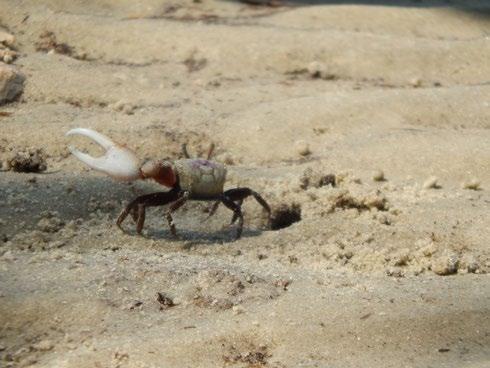
3 minute read
NATURE’S HEALTH PROGRAM: THE SALT MARSH Krista Schmidt, Asst. Naturalist, FIR
Nature’s Health Program:
The Salt Marsh. Contributed By: Krista Schmidt, Assistant Naturalist Fripp Island Resort.
When one thinks of the Lowcountry, a salt marsh usually comes to mind. The waving grasses, the smell of the pluff mud, the popping of the oysters, and the flow of the water all come together to create the beautiful marshes we call home.
The salt marsh is a diverse ecosystem that houses many different organisms, from wading birds to crabs to dolphins. But the salt marsh does more than just provide habitat. Salt marshes provide many ecosystem services, including water purification, erosion and flood control, and carbon sequestration. All of these services contribute to a healthy environment, and are important reasons why salt marshes must be preserved.
So how does the salt marsh provide all these benefits?
One of the most important functions of the marsh is maintaining water quality. The main components that contribute to water quality are the oysters, the spartina grass, the suspended sediment, and the tides. First, the oysters that make up the large reefs in the marsh are excellent filter feeders. A single oyster is able to filter around 50 gallons of water a day. Through this process, they help remove excess nitrogen from the water. Too much nitrogen - often from runoff- can be


detrimental to water bodies, as it boosts large algal blooms.
Another component contributing to water quality is the spartina grass. These plants are able to take up excess nutrients and chemicals and store in their roots. Sediments in the water also aid in this process, as pollutants often stick to floating sediments and are then deposited on the mudflats where the spartina grass grows. Bacteria in the sediments also help break down the stored chemicals.
Finally, the tides help with water quality as well. In South Carolina, we have large tidal changes, ranging from 6 to 8 feet of change, twice a day. This large amount of water moving through the system each day helps flush excess nutrients and maintains good oxygen levels. All of these components come together to maintain healthy waters with an abundance of life.
Another important service the salt marsh provides is erosion and flood control. South Carolina contains nearly a halfmillion acres of salt marsh, which is the highest acreage of marsh out of all the Atlantic coast states. As storms travel towards the mainland from the Atlantic, the salt marsh acts as a buffer by greatly reducing wave energy. By reducing the strength of storms once they reach the mainland, the marsh protects these areas from erosion and flooding.
Finally, salt marshes provide a high level of carbon sequestration. This is the process in which plants convert carbon dioxide into plant material during photosynthesis. Coastal plants, such as mangroves, sea grasses, and marsh grasses, are known to take up 100 times more carbon than plants in the forest. Since South Carolina’s marshes are so extensive, they provide a significant carbon sink. In addition to the spartina grass, carbon can also be stored in the mud and in dead grass called wrack that accumulates on the beaches. Because of this, the salt marsh is not only important in maintaining the ecosystem health of local waters but also for the health of the planet, as it helps reduce greenhouse gases.
The salt marsh is a beautiful landscape that provides habitat and maintains ecosystem health. Fripp Island is lucky to be surrounded by pristine marshlands that we can enjoy year-round and appreciate the value of.










